Description
Though probably originating around 1550, the plug bayonet had a relatively short span of
use from around 1650-1720 (except in Spain where they were used into the 19th C). Their
rise in popularity largely paralleled the development of standing armies in Europe, which
were realizing the importance of the musketeer, while at the same time not wanting to
wholly abandon the pike. In this sense the plug bayonet can be considered a transitional
weapon. However, despite its use as a dagger on its own, it was soon found to be
impractical since it’s use prevented the musket from being fired. Countless soldiers also
found great difficulties in removing a stuck plug bayonet from the muzzle, rendering the
musket useless as a firearm. Many were damaged while being removed and as a result
relatively few survive. For these reasons it was soon superceded by the socket bayonet,
which did not affect the musket’s ability to fire and could much more easily be removed.
This exact piece is pictured in R. D. C. Evans’ “The Plug Bayonet” (2002) on page 149,
Plate 271 and comes from the author’s personal collection. Broad tapered 15 1/2″ double
edged lenticular-section blade (lightly pitted) with long flat ricasso. Hilt with short brass
quillons with button terminals and integral grip ferrule, the quillons recessed to
accommodate the blade base. Brass pommel with spirally fluted button. Turned tapering
figured hardwood (walnut?) grip, swelling at the base, with a pair of lathe-turned double
incised lines. Overall length 22″. Published examples of early plug bayonets almost
never appear on the market.

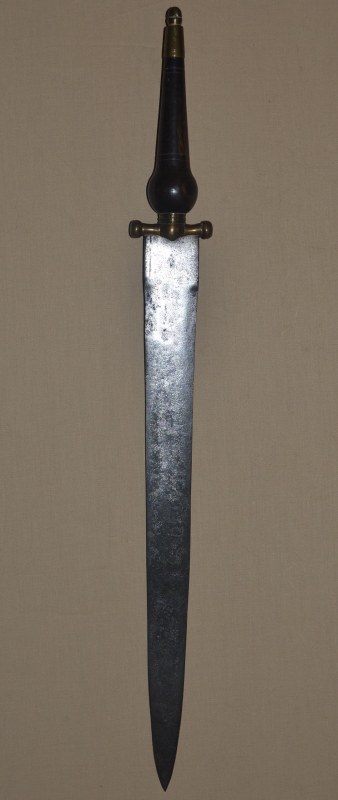

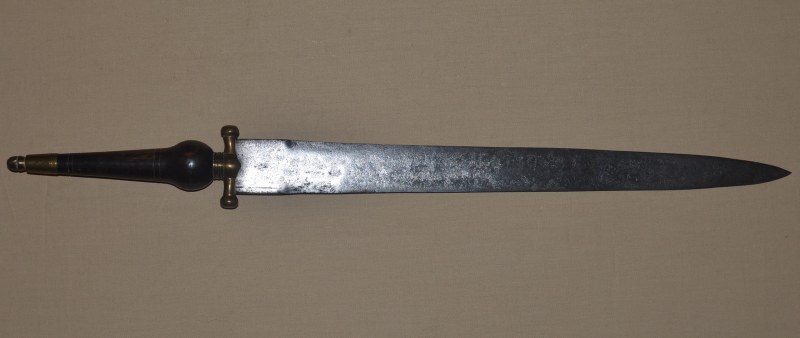
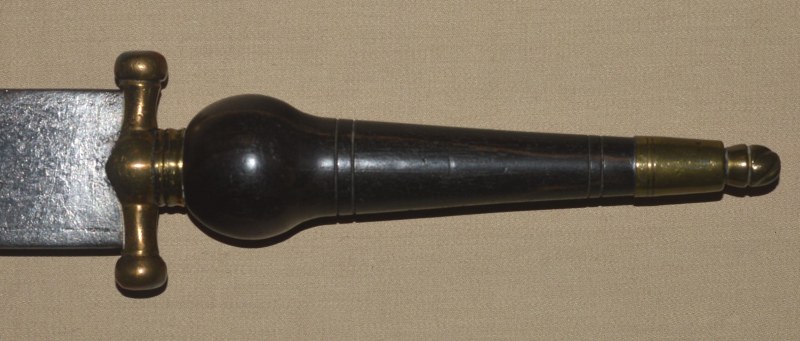
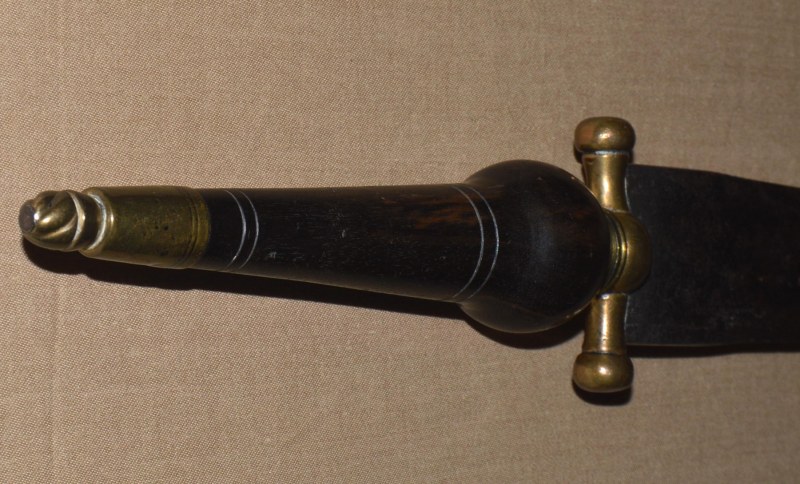
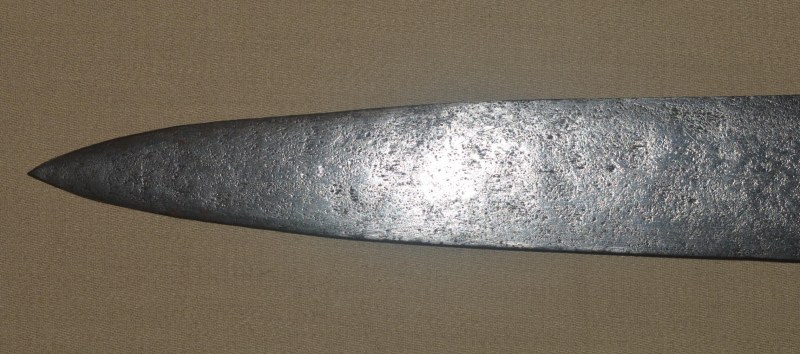
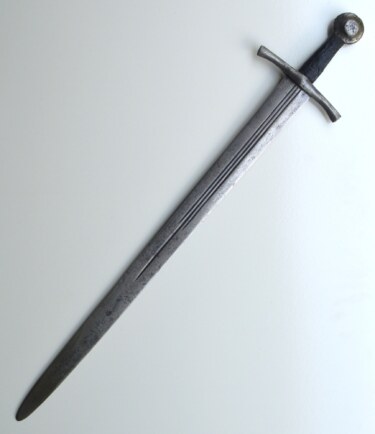 Medieval Knightly Type XIV Broadsword, Early 14th C
Medieval Knightly Type XIV Broadsword, Early 14th C
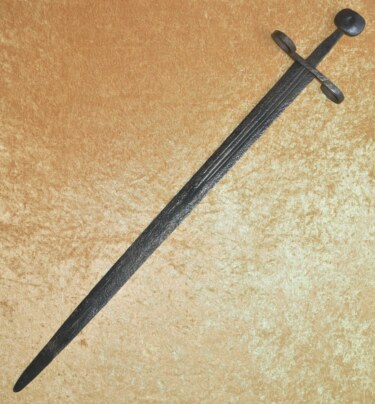 Medieval Knightly Broadsword, 14th/15th C
Medieval Knightly Broadsword, 14th/15th C 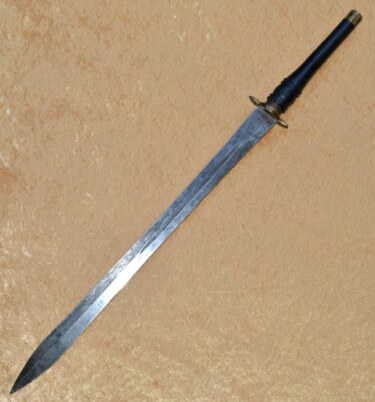 Exceptionally Long English Plug Bayonet, ca. 1700
Exceptionally Long English Plug Bayonet, ca. 1700 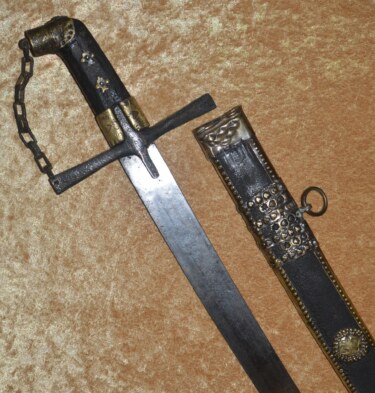 Hungarian Hussar Saber and Scabbard, Late 17th C
Hungarian Hussar Saber and Scabbard, Late 17th C